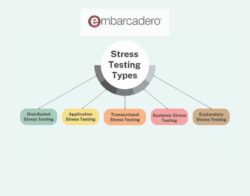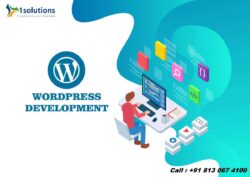An Introductory Guide to the Basics of Strategic Development
In today’s fast-paced and competitive business environment, strategic development has become a critical component for organizations looking to thrive and grow. Whether you are a seasoned business professional or just starting your career, understanding the basics of strategic development is essential for success. This introductory guide will break down the key concepts, steps, and best practices to help you navigate the world of strategic development with confidence.
What is Strategic Development?
Strategic development is the process of defining an organization’s long-term goals and objectives and determining the best course of action to achieve them. It involves assessing the organization’s current state, identifying opportunities and threats in the external environment, and formulating strategies to position the organization for success.
Why is Strategic Development Important?
Strategic development is crucial for several reasons:
Direction: It provides a clear sense of direction for the organization, ensuring that everyone is working towards common goals.
Competitive Advantage: It helps organizations stay ahead of competitors by anticipating market trends and opportunities.
Resource Allocation: It guides the allocation of resources, such as budget, manpower, and time, to projects and initiatives that align with the organization’s strategic objectives.
Adaptation: It allows organizations to adapt to changing market conditions and customer preferences effectively.
The Basics of Strategic Development
Strategic development involves a series of steps and considerations. Here is a simplified breakdown of the process:
1. Environmental Analysis
Before creating a strategy, it’s essential to understand the external factors that can impact your organization. It includes:
Market Research: Gather data on your target market, including customer preferences, trends, and competitors’ activities.
SWOT Analysis: Identify your organization’s Strengths, Weaknesses, Opportunities, and Threats to gain a holistic view of its current position.
2. Goal Setting
Once you have a clear understanding of the external environment, it’s time to set specific, measurable, achievable, relevant, and time-bound (SMART) goals. These goals should align with your organization’s mission and vision.
3. Strategy Formulation
With your goals in place, it’s time to formulate strategies to achieve them. Here are some popular strategic approaches:
Cost Leadership: Strive to be the lowest-cost producer in your industry.
Differentiation: Focus on offering unique products or services that set you apart from competitors.
Market Segmentation: Divide your target market into segments and tailor your offerings to each segment’s specific needs.
Diversification: Expand your product or service offerings into new markets or industries.
Partnerships and Alliances: Collaborate with other organizations to leverage their strengths and resources.
4. Action Planning
Once you have defined your strategies, break them down into actionable steps. Create a detailed action plan that outlines who will do what, by when, and with what resources. It ensures accountability and clarity in execution.
5. Resource Allocation
Allocate the necessary resources, such as budget, manpower, and technology, to support the execution of your strategies.
6. Execution and Monitoring
Execute your action plan and closely monitor progress. Regularly review your performance against your goals and make adjustments as needed.
7. Feedback and Adaptation
Collect feedback from employees, customers, and stakeholders to identify areas for improvement. Use this feedback to adapt your strategies and action plans.
Best Practices in Strategic Development
Now we’ve covered the basics, let’s explore some best practices that can enhance your strategic development process:
1. Involve Key Stakeholders
Include input from key stakeholders, such as employees, customers, and partners, in the strategic development process. Their insights can provide valuable perspectives and increase buy-in.
2. Continuous Learning
Stay updated on industry trends, emerging technologies, and best practices in strategic management. Attend workshops, conferences, and webinars to expand your knowledge.
3. Risk Management
Identify potential risks and develop contingency plans to mitigate them. A proactive approach to risk management can save your organization from unforeseen challenges.
4. Communication
Ensure clear and effective communication of the strategic plan throughout your organization. Transparency and alignment with the plan’s objectives are essential.
5. Flexibility
Be prepared to adapt your strategies in response to changes in the external environment or unforeseen circumstances. Flexibility is essential for long-term success.
6. Measurement and Evaluation
Establish key performance indicators (KPIs) to measure the progress and success of your strategies. Regularly evaluate your performance and adjust strategies accordingly.
Conclusion
Strategic business development is a dynamic and ongoing process that requires careful planning, execution, and adaptation. By following the basics outlined in this guide and incorporating best practices, you can set your organization on the path to success. Remember that strategic development is not a one-time activity but a continuous journey to stay relevant and competitive in today’s ever-changing business landscape. Start by analyzing your environment, setting clear goals, formulating effective strategies, and executing them with precision. With dedication and the right approach, your organization can achieve its long-term objectives and thrive in the world of strategic development.



















































